Unexpectedly losing power disrupts life, halts business operations, and poses a safety risk. This is where the standby generators come into play, acting as the most reliable sources of backup power in times of need. These generators are initiated automatically in response to severe storms, equipment failure, or any unforeseen outage to restore electricity and keep your home or business up and running safely. In this article, we will examine standby generators in detail, including their mechanisms and the benefits they offer. Get set for a journey into the investment of peace of mind and preparedness, which could indeed turn out to be a worthy option for you.
Introduction to Standby Generators
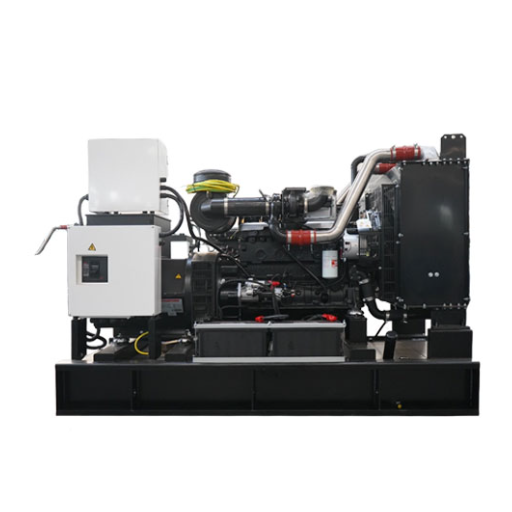
A standby generator is a backup power system that automatically supplies electricity to your home or business during a power outage. It is permanently installed and connected to the property’s electrical system, most often powered by natural gas or propane. Because it detects power outages, the generator starts up within seconds to restore electrical power, allowing essential appliances and systems to continue operating. Reliable and efficient, standby generators inspire confidence and minimize downtime to ensure safety in the event of an unforeseen power failure.
Definition and Importance
The standby generator is a crucial backup power option designed to automatically restore electrical power in the event of a power outage. A standing installation will be performed at any location to interconnect the property’s electrical systems with the generator, which operates on natural gas or propane fuel. Essentially, these generators provide uninterrupted power to homes and businesses, ensuring heating and cooling during shutdown periods; they also keep other critical systems, such as medical needs and home security, operational.
Inquiries about standby generators have increased significantly today due to heightened awareness of extreme weather conditions and grid instability. This upsurge proves to be the testimony that stands to uphold the association of standby generators as one of the sure means of mitigating the risk that all power outages pose. They offer assurances to the owners that the evolution of power will never pose a threat to their safety, comfort, and functionality, even during unexpected disruptions.
How Standby Generators Work
When a power outage is detected, a standby generator automatically starts up to feed electric power to the home or office buildings. Typically, these generators are connected to an external fuel supply system, often a gas line for natural gas or propane, to ensure a continuous power supply without the need for refueling. During a power failure, the transfer switch in the generator activates, isolating the customer’s premises from the utility grid and feeding power directly from the generator. When power from the grid is restored, the generator shuts down, and the transfer switch reconnects to the utility line.
There has been an increase in the frequency of queries related to the “working of standby generators,” suggesting that interest in the subject has intensified. Several users want to know how reliable these generators are during extreme weather conditions or outages. This technology not only covers basic life support instruments, such as refrigerators and HVAC systems, but also performs crucial processes for businesses to avoid potential revenue loss and downtime.
Peace of Mind During Power Outages
Standby generators provide backup power automatically during power outages. These systems are powered by natural gas or propane and are permanently installed outside the home or business, much like an air conditioning unit. When a power outage occurs, an automatic transfer switch detects it and signals the generator to start. Generators start within seconds of a power outage, resulting in minimal disruption to one’s daily life or critical business operations. After the restoration of central power, the system shuts down the generator and switches back to using power from the utility grid. As interest grows, it appears that many people are becoming aware of the peace of mind a standby generator can offer by maintaining power uninterrupted during an emergency.
Benefits of a Standby Generator
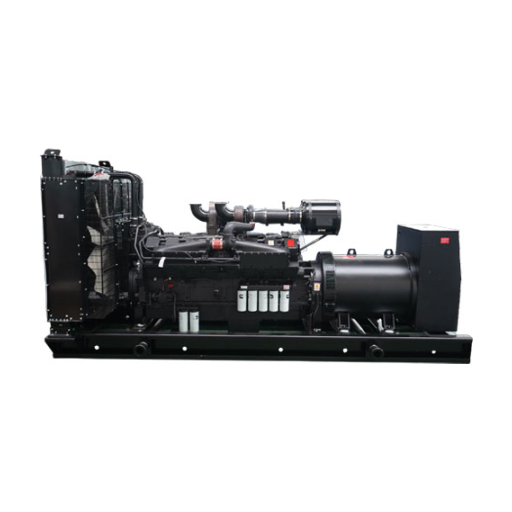
- Uninterrupted Power Supply
A standby generator guarantees that a home or business will continue to receive electricity during outages, hence minimizing interruptions to essential services.
- Automatic Activation
These systems initiate service within seconds, offering convenience and peace of mind. They detect loss of power automatically.
- Protection of Essential Appliances
They ensure that critical appliances, such as refrigerators, medical equipment, or heating systems, remain operational for the life of the building and the comfort of its occupants.
- Enhanced Property Value
With standby generators installed, the property’s resale value is increased because it is an attractive feature for prospective buyers.
- Custom Power Solutions
Standby generators are available in various capacities, allowing you to choose a system that suits your specific needs.
Reliable Backup Power
An uninterrupted power supply must be reliable. A continuous power supply is necessary to maintain normalcy in the event of an unplanned power shutdown. Many concerns have been expressed regarding the impact of a power shutdown on their work, safety, and daily life. There is no guarantee that storms, grid failures, or other emergencies will not strike at any time. Standby generators help keep critical systems operating during an emergency. Critical backup electricity brings relief to the minds, supporting the smooth flow of interruption-free processes at personal and professional levels. It powers essential equipment, such as medical devices, and also supports remote working setups.
Cost-Effectiveness in the Long Run
The cost of purchasing a standby generator may seem relatively high for an initial investment. Yet, it proves to be very user-friendly in the long run. Search trends indicate an increasing focus on energy reliability, with most users interested in cost-saving measures for more extended outages. Standby generators reduce losses resulting from spoiled food, halted production, or additional accommodation costs typically incurred due to power failures, especially in cases of prolonged outages. Additionally, with the introduction of newer models designed for efficient operations, fuel consumption has been optimized compared to older models, and they are less demanding in terms of maintenance. For long-term savings and peace of mind, a generator is the best choice for homeowners and businesses, more so in the wake of prevailing energy instability.
Enhanced Safety and Security
Currently, generators supply backup power and create immense security during emergencies. These generators ensure an uninterrupted power supply to devices such as medical equipment, lighting systems, and home security systems, especially during prolonged power outages. Nowadays, an increasing number of searches for solutions to power outages and home safety indicate consumer concerns about their preparedness. A generator will ensure that homeowners and businesses aren’t vulnerable in the areas of visibility or security alarm systems, thus providing all the peace of mind that these individuals demand.
Generator Installation and Maintenance
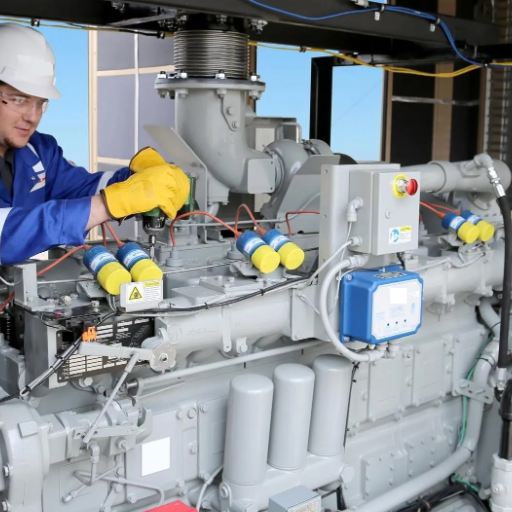
The installation must be performed correctly, and regular maintenance is necessary to ensure the generator operates efficiently and safely. Installation should be performed by a licensed professional to ensure adherence to all local codes and to prevent unsafe connections to a home or business. Generators must be placed outside or in a well-ventilated area to avoid exhaust fumes from posing a danger.
In maintenance, follow the manufacturer’s instructions. For example, these generally include regularly checking or changing the oil, replacing the air filters, and inspecting batteries and connections for wear and damage. Additionally, it is helpful to occasionally run the generator when it is not in use, ensuring it is functioning correctly. Professionals can be called to conduct an annual inspection to catch areas of concern before they become a cause of failure.
Standby Generator Installation Process
The installation of a standby generator involves multiple steps that must be carefully planned and executed with safety standards in mind. To start, an on-site evaluation is conducted to determine the optimal location for the generator, ensuring it is at least five feet away from any windows, doors, or vents to prevent exhaust fumes from entering the building. The generators should also be set down on a level and stable site, most commonly on concrete or gravel.
Afterwards, a qualified electrician installs wiring from the generator to the building’s electrical system through an automatic transfer switch (ATS), allowing for a seamless transition between utility and generator power during outages. The wiring must be done correctly, with load calculations taken into consideration, to prevent overloading. Otherwise, the circuits could get damaged, as well as the appliances themselves.
Fuel source planning is another essential step, which can involve using a propane, natural gas, or diesel generator. The installation company must guarantee that the fuel lines are connected correctly and meet local safety standards. Additionally, the system must be tested after installation to ensure that, under simulated outage conditions, the generator can power the load of critical circuits as designed.
Homeowners should then register the generator with the manufacturer, maintain a log of regular maintenance, and comply with local codes and permits. Proper handling throughout the entire process will enable the safe and efficient setup of the generator system, offering protection to the home in the event of an unscheduled outage.
Regular Maintenance for Optimal Performance
To run efficiently, the generator must be regularly maintained. A homeowner will need to perform visual inspections, change the oil as instructed in the manual, and replace air filters and spark plugs as required. It is also beneficial to wash the exterior with water and a mild detergent, ensuring that nothing blocks the ventilation system. The generator must be tested periodically, preferably before the extreme weather seasons, so that it will function correctly when needed most.
The most searched questions about generator maintenance revolve around the frequency of oil changes and what to do when a generator will not start. Experts recommend changing the oil every 50-200 hours of use or after each season, depending on the generator’s usage. Non-start problems are typically resolved by ensuring there is fuel in the generator, checking that battery connections are tight, and verifying that switches are correctly set. A combination of preventive maintenance and professional maintenance will help ensure that the times the generator is called upon to perform during outages are the times when the generator performs well.
Common Installation Challenges
- Improper Site Selection
One common problem is selecting an improper site for the generator. If installed too close to occupied buildings, a generator might present noise and exhaust problems, whereas if placed in low-lying areas, it might get flooded during heavy rains.
- Insufficient Ventilation
Generators produce heat and exhaust gases during operation; hence, design provisions for adequate ventilation are imperative. If proper ventilation of the exhaust gases is not provided, it can lead to overheating or may cause carbon monoxide hazards; hence, the safety issues are critical to consider.
- Incorrect Sizing of the Generator
The generator, when improperly sized, may strain its equipment if it is insufficient for load requirements and, in any case, may fail during use. On the other hand, a generator that is too large will lead to unnecessary fuel consumption and increased installation costs.
- Wiring and Electrical Connection Errors
Wrong electrical connections are a common issue during installation procedures. Such errors may include reverse polarity, loose connections, and improper grounding, which can compromise the safety and operation of the system.
- Non-compliance with Local Codes and Regulations
Many installations have failed to meet compliance with local building and electrical codes. This may lead to fines, alterations to the work, or even voiding of the warranty on one’s behalf; hence, the need for compliance must be emphasized during the installation process.
Understanding Power Outages
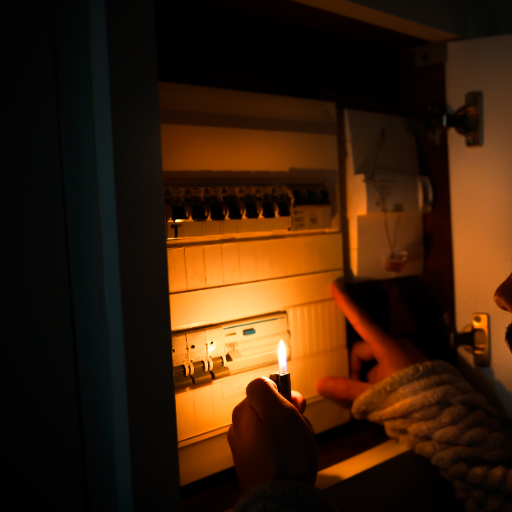
Power outages are events caused by specific reasons. Typical causes include severe climatic conditions, such as storms, hurricanes, or heavy snowfall, which can damage or disrupt power lines and equipment. Other causes can be equipment failures, such as malfunctioning transformers. Human-induced interruptions can also occur; examples include construction accidents and utility company-initiated outages for maintenance purposes, although these are typically brief in duration. Overloading during peak demand is yet another factor that might cause failures in the electrical grid. Understanding these causes helps in conceiving remedies and indeed makes for appropriate preparation against power outages.
Causes of Power Outages
Power outages occur worldwide, with severe weather being the leading cause. Hurricanes, thunderstorms, and ice storms bring widespread disruptions, including fallen trees, strong winds, and ice buildups on power lines. Another issue appears to be aging infrastructure, as older transformers and power grids are more susceptible to sudden failure during peak periods of heat or cold snaps. In this day and age, one’s mind often wanders to other related considerations. With intentional cyberattacks on the rise, perpetrators may infect power systems with malicious software and intentionally shut them down. Finally, the peak demand has also led to grid overloads, particularly with the increasing use of air conditioning during heat waves, thereby necessitating energy efficiency and grid resilience measures.
Impact of Outages on Homes and Businesses
Power outages disrupt homes and businesses, leaving inconveniences and economic losses. For a household, an outage may mean that the heat or cooling system is not working, food spoils because the fridge is not functioning, or there is no reliable way to communicate through Wi-Fi or mobile devices. For businesses, outages can be significantly more problematic: operations are forced to come to a temporary halt, productivity declines, and IT systems may lose data. The latest data indicate that searches for “power outage solutions” and “home backup generators” have increased significantly. This illustrates the growing public concern about the increasing frequency of blackouts. Hence, uninterrupted power and energy storage systems installations should be highly considered to reduce the effect of outages on day-to-day life and critical business operations.
Power Restoration and Response Strategies
Power outages necessitate prompt restoration and response measures to safeguard homes, businesses, and critical infrastructure from damage. Therefore, here are five principal strategies supported by data and practical methods to improve power restoration and preparedness:
- Deployment of Smart Grid Technology
The intelligent grid uses smart technology sensors and automations to detect an outage and reroute power immediately. An outage, according to a Department of Energy study, can be reduced by 50% in time with the implementation of smart grids. They enable real-time monitoring and efficient communication among the components of the power network.
- Improved Maintenance of Power Infrastructure
Regular inspections and maintenance of power lines, transformers, and substations can significantly reduce the likelihood of outages due to equipment failure. EPRI data reveals that preventive maintenance reduces downtime by an average of 30%.
- Integration of Renewable Energy with Energy Storage
The integration of renewable sources, such as solar or wind, with energy storage ensures that power is available during grid disturbances. There was a 182% rise in deployment of energy storage across the globe in 2022, indicating the increased relevance of this technology in outage-favorable measures.
- Community-Based Microgrids
Microgrids operate independently of the central power grid, providing power access within a localized area affected by outages. A study by the University of California found that microgrids helped communities register a 60% improvement in electricity reliability during emergencies.
- Implementation of Advanced Outage Management Systems (OMS)
Using data analytics and predictive algorithms, an Outage Management System can improve forecasting and response to disruptions. Utility agencies utilizing OMS report that restoration times have improved by 20% to 40% compared to conventional methods.
Essentially, these approaches emphasize technology and foresight as being the integrating factors for resilient energy systems. Each one is a step toward a stronger and more sustainable approach to handling power outages.
The Role of Standby Generators in Modern Life
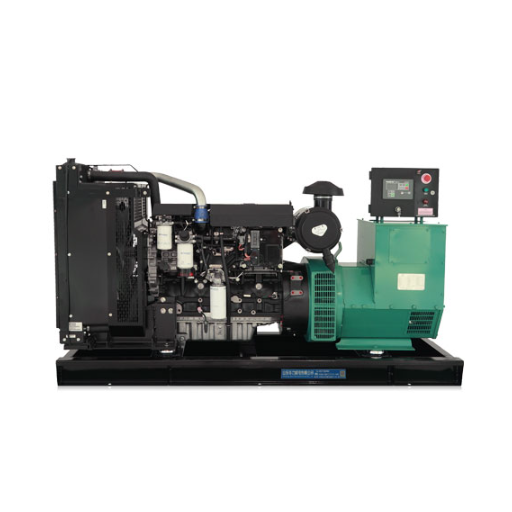
Therefore, a standby generator ensures that backup power is provided in the event of a power disruption, maintaining continuity in the residence, business, or other critical area. A standby generator ensures that heating, cooling, life support, and communication systems remain up as long as the main power supply is interrupted. In general, it is a reliable system with an automatic generator that can take action in a matter of seconds when power is lost, thereby minimizing downtime and reducing the disruption to everyday life caused by an outage. Their importance is more pronounced in areas affected by extreme weather or natural calamities, where power interruptions are more frequent.
Summary of Benefits
- Uninterruptible Power Supply – During periods of electricity blackouts, backup generators ensure a seamless transfer of power to critical systems, thereby ensuring their continuous operation. It is reported that backup generators can reduce downtime by 95% when relying entirely on grid energy.
- Enhanced Safety and Security – They maintain security systems, lighting, and medical equipment, making them crucial technological implementations during emergencies. Studies have cited reductions in safety hazards in institutions with backup power solutions.
- Prevention of Data Loss – Backup generators protect businesses from sudden shutdowns or data loss. Industry reports show that power outage downtime can cost enterprises an average of $5,600 per minute.
- Support for Essential Services – Essential Generators in hospitals, Emergency Response Centers, and Public Utility Services are located in areas prone to frequent disasters. Evidence suggests a 30% increase in operational delays during power outages in healthcare facilities lacking backup solutions.
- Flexibility in Extreme Conditions – Backup generators can operate under a wide range of environmental conditions, making them highly reliable for areas experiencing extreme weather. Research shows that, in regions at high risk of natural disasters, in-demand standby power systems are almost 40% higher.
Future Considerations for Standby Generators
Considering the future of the standby generator, I think fuel efficiency and the incorporation of renewable energy sources will become major thrusts. The increasing popularity of green and sustainable alternatives necessitates exploring hybrid systems or generators that utilize cleaner energy options. Simultaneously, I consider that advances in remote monitoring and automation should result in improved reliability and maintenance. These facility enhancements will allow standby generators to be even more efficiently tailored to fulfill specific energy needs while minimizing environmental impact.
Final Thoughts on Backup Power Solutions
When considering backup power options, it is essential to consider all factors that may contribute to the successful realization of user requirements, as well as environmental and operational challenges. The following are five factors that should be considered carefully:
- Hybrid Energy Systems
- Keeping fossil-fuel generators and renewable sources, such as solar or wind energy, separate from each other increases carbon emissions and fosters a greater dependency on fossil fuels. In some cases, a hybrid system showed a 20–30 percent reduction in fuel use.
- Energy Storage Integration
- Incorporating battery storage systems means that the energy can be stored and used when needed during an outage. Lithium-ion batteries are now the most favored choice due to their long cycle life and higher energy density.
- Improved Remote Monitoring
- Remote monitoring solutions track generator performance in real-time, allowing for predictive maintenance. Reports suggest downtime can be reduced by as much as 40% with these systems, along with an increase in generator life.
- Advanced Automation
- Automated generator start-up and load management provide a smooth transition during any power outage. Advanced systems ensure switching within 10 seconds, therefore significantly reducing interruptions.
- Noise and Pollution Reduction
- Improving the generator to run quieter and cleaner could lower noise pollution and pollutant emissions. Innovations in muffler technologies and cleaner-burning engines account for a 15-20% noise reduction in generators compared to older models, while also reducing pollutants.
If attention is focused on these fields, backup power solutions can only become more efficient, sustainable, and reliable.
Reference Sources
-
North Dakota State University (ndsu.edu)
Safely Use Standby Generators for Emergency Power
This resource examines the benefits of standby generators in mitigating power outages. -
University of Kentucky (uky.edu)
Remember Safety with Standby Generators on the Farm
This article highlights the use of standby generators for emergency power during disruptions caused by storms and disasters. -
Virginia Tech (vtechworks.lib.vt.edu)
Standby Electric Generators for Emergency Farm Use
This publication provides guidelines on using standby generators to prevent losses during local power failures. -
University of California, Berkeley (berkeley.edu)
Standby Generator Sets
This document outlines the standards and requirements for diesel emergency standby engines. -
North Dakota State University (ndsu.edu)
Standby Electric Generators
This page explains the role of standby generators in mitigating the impacts of power failures.
Frequently Asked Questions (FAQs)
Q: What are standby generators designed for?
A: Standby generators are designed to provide reliable power in the event of a power outage. Unlike portable generators, they are permanently installed and automatically supply backup power in the event of a disruption to the primary power grid. This ensures that essential appliances and systems continue to operate smoothly during emergencies.
Q: How does a standby generator work?
A: A standby generator operates by continuously monitoring the main power supply. When it detects a power cut, it triggers the generator to start within seconds. This automatic transition from grid power to backup power ensures minimal disruption, allowing your home to remain powered during extended power outages.
Q: What are the advantages of a standby generator over portable generators?
A: Unlike portable generators, standby generators are permanently installed and offer the convenience of automatic operation. They can restore power without manual setup, providing peace of mind during emergencies. Additionally, standby generators are typically fueled by natural gas, making them a reliable power source that requires minimal refueling.
Q: How do I choose the right standby generator for my home?
A: To choose the right generator, assess your power needs by identifying which appliances and systems must remain operational during an outage. Consider the wattage required and select a generator that can handle that load. It’s also essential to consider whether you want a generator that connects to the grid via natural gas or one that requires manual setup.
Q: Can standby generators increase the value of my home?
A: Yes, installing a standby generator can enhance your home value. Many homebuyers are drawn to properties with reliable backup power solutions, as they offer security and convenience during power outages. A standby generator can be a worthwhile investment, particularly in areas prone to power interruptions.
Q: What happens during a power outage with a standby generator?
A: During a power outage, the standby generator automatically detects the loss of power from the grid, starts up, and begins supplying electricity to your home. It typically monitors the main power supply and shuts down the generator once power returns, ensuring a seamless transition back to the grid.
Q: Are there different types of standby generators?
A: Yes, there are various types of standby generators, including residential and commercial standby generators. Residential models are designed for home use, while commercial generators are built to handle larger power needs, making them suitable for businesses and industrial applications.
Q: How often should I maintain my standby generator?
A: Regular maintenance is essential for standby generators to ensure reliable operation. It is recommended to conduct routine checks and servicing at least once a year, including testing the generator, checking the fuel supply, and ensuring all components are functioning correctly.
Q: What fuel types do standby generators run on?
A: Most standby generators run on natural gas, which offers a continuous and reliable power supply during outages. Some models may also be fueled by propane or diesel, depending on your preferences and the availability of fuel sources in your area.
